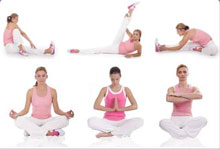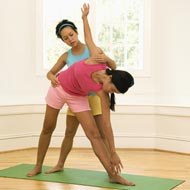Exercises for Tremors
Tremors can be described as the involuntary, rhythmic contraction and relaxation of the muscles, mostly involving to-and-fro movements in the body. This problem is more likely to affect your hands, legs, face, head, eyes, arms, head, trunk and vocal folds. The shaking may occur in one or more body parts, depending upon the causes and your overall health.
For many individuals, shaking of body parts could be a natural part of the ageing process. However, at times, tremors could be a symptom of deeper, underlying neurological disorders like Parkinson’s disease, multiple sclerosis, brain injuries, strokes and chronic kidney disease. Other causes of the shakes include -
- Alcohol abuse
- Anxiety
- Drug use
- Lack of sleep
- Liver failure
- Mercury poisoning
- Overactive thyroid
- Shock
- Stress
- Vitamin deficiency
In some instances, you may experience tremors in the form of chattering teeth, because of fear or the cold.
It is also possible for tremors to occur without any apparent cause.
The treatment for tremors may vary, depending upon its underlying causes. Apart from medication and therapy to address the underlying cause, your doctor may also recommend a few exercises -
- Stretching exercises are especially beneficial for tremors, as they release built-up tension and bring about neuromuscular relief.
- Weight training also plays an important part in controlling tremors, as it strengthens the muscles.
- Aerobic exercises like walking, jogging, running and swimming relieve stress from the body and are therefore good for reducing tremors too.
- Yoga exercises, as they relieve stress from the body and increase strength in the muscles
It is important to check with a doctor before trying any of the exercises.
Stress reduction
In today’s world, almost all of us experience some amount of stress. However, excessive stress may cause you to experience various health problems, which could also include tremors. In such instances, it is best for you to try a few simple stress reduction techniques, which include -
- Meditating
- Creating peaceful visualizations to picture yourself relaxed
- Cutting down on caffeine and opt for green tea or chamomile tea instead
- Exercising for at least half an hour each day
- Following a healthy and well-balanced diet
- Getting an adequate amount of sleep and rest each day
- Going in for a relaxing massage
- Performing a repetitive activity that keeps you calm and draws your attention to the present
- Practicing deep breathing for about 10 to 15 minutes each day
- Spending some time carefully planning and prioritizing your day
- Taking some time off, when things get too hectic
There are many yoga poses that are also good for relieving stress. These include -
- Savasana (The Corpse Pose)
- Setu Bandha Sarvangasana (The Bridge Pose)
- Uttanasana (The Standing Forward Bend)
- Trikonasana (The Triangle Pose)
It is advisable to check with a doctor, before trying any of the poses.
Exercises
It is a well-known fact that exercising is very important for your body. However, did you know that you could reduce tremors with the help of certain yoga exercises too? Given below are some of the most effective yoga poses for tremors –
- Baddha Konasana (The Bound Angle Pose)
- Janu Sirsasana (The Head-To-Knee Pose)
- Chandrasana (The Standing Side Bend)
- Pavan Mukhtasana (The Wind Relieving Pose)
- Ardha Matsyendrasana (The Half Fish Pose)
These poses are especially beneficial in controlling tremors caused by Parkinson’s disease. However, it is best to check with a doctor before performing any of them.
Relaxation
The ancient practice of yoga is known to promote relaxation. However there are a few poses that are more beneficial than the others. These include –
- Bhujangasana (The Snake Pose)
- Sukhasana (The Easy Pose)
- Dhradhasana (The Firm Pose)
- Balasana (The Child’s Pose)
- Adhavasana (The Relaxed Pose)
- Supta Baddha Konasana (The Reclined Bound Angle Pose)
The yoga poses mentioned above should only be practiced after getting a go-ahead from a doctor.
Read more articles from the Yoga and disease Category.
 Find Pose
Find Pose

